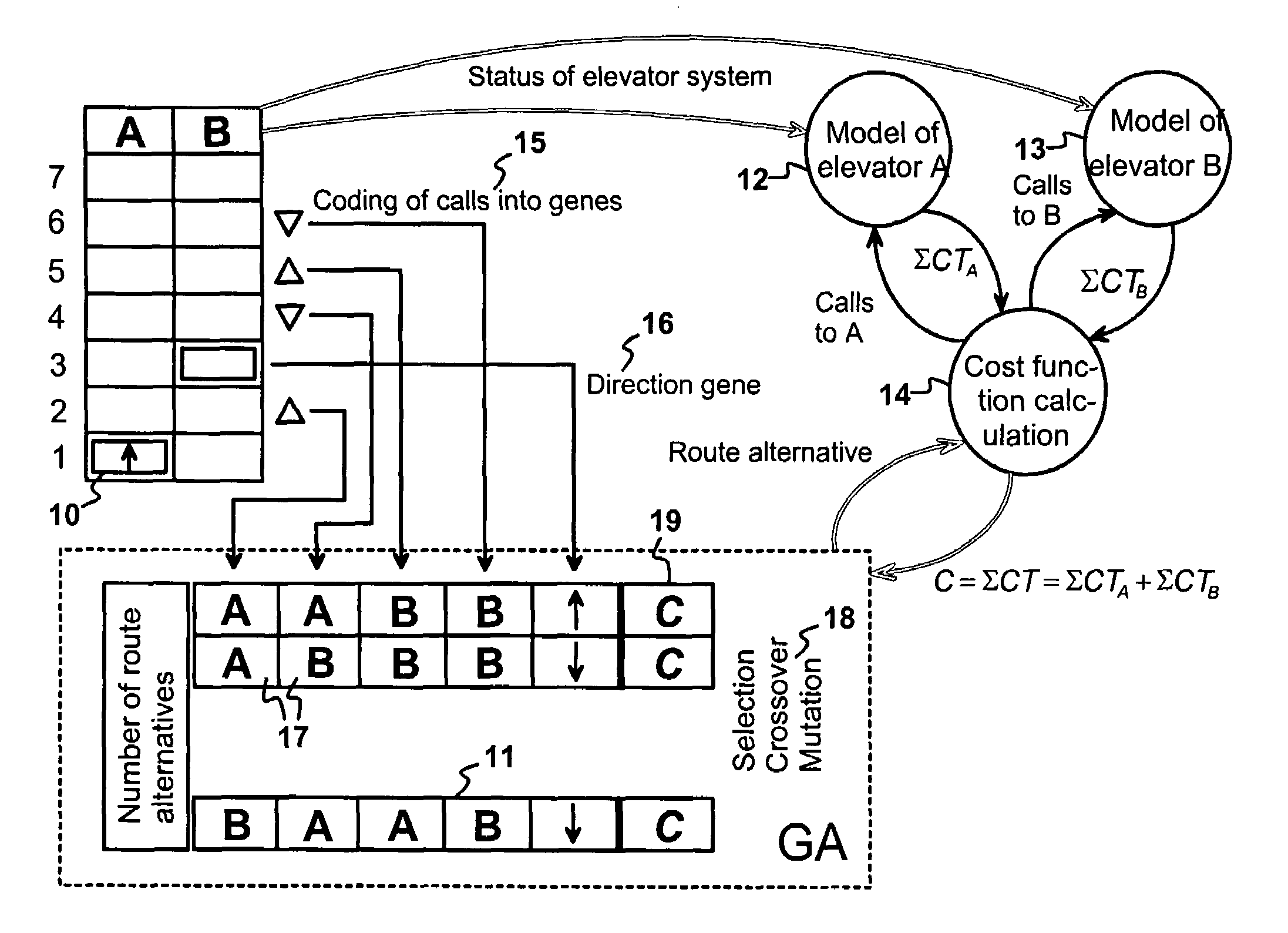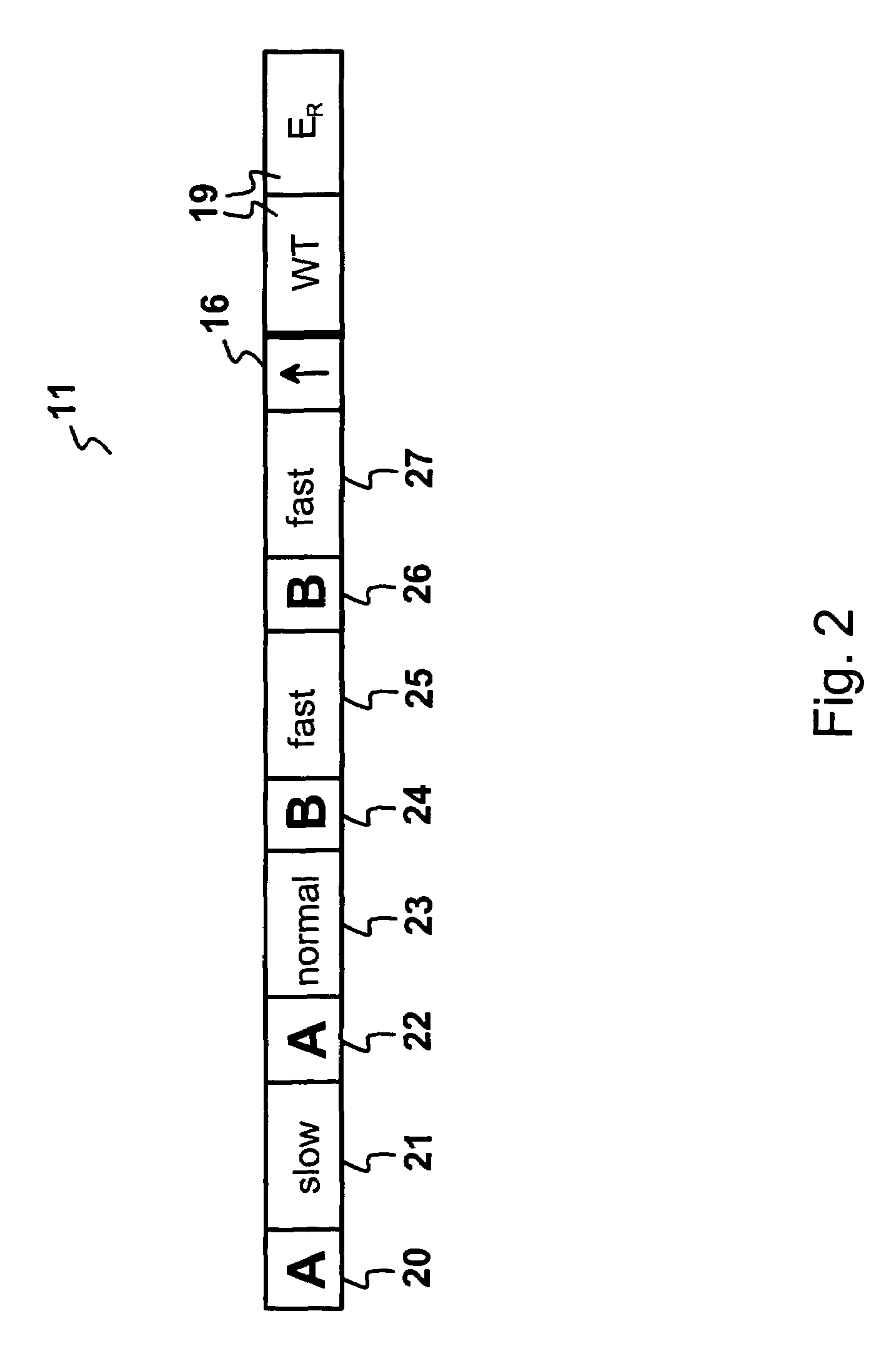Elevator system
a technology of elevators and elevators, applied in the direction of elevators, genetic algorithms, instruments, etc., to achieve the effect of degrading the level of service offered and less consumption
- Summary
- Abstract
- Description
- Claims
- Application Information
AI Technical Summary
Benefits of technology
Problems solved by technology
Method used
Image
Examples
Embodiment Construction
[0031]With regard to the characteristic attributes of the present invention reference is made to the claims.
[0032]The present invention discloses a method for allocating elevator cars based on the active calls, utilizing prior art genetic algorithms and a novel structure of chromosome according to the present invention. The basic concept of the present invention is to include in the examination the kinetic energy linked to the masses and to the speeds of the system in addition to the potential energy.
[0033]It can be considered that an individual elevator in use comprises three mass components, namely the empty elevator car, the counterweight of the elevator and the passengers inside the elevator car. If the passenger capacity of the elevator car is CC (in kilograms), then in this case the counterweight can be dimensioned so that:
[0034]mcw=mcar+12CC(3)
[0035]The mechanical energy consumed and that part returned to the use of the system in the run of the elevator from one floor to ano...
PUM
 Login to View More
Login to View More Abstract
Description
Claims
Application Information
 Login to View More
Login to View More - R&D
- Intellectual Property
- Life Sciences
- Materials
- Tech Scout
- Unparalleled Data Quality
- Higher Quality Content
- 60% Fewer Hallucinations
Browse by: Latest US Patents, China's latest patents, Technical Efficacy Thesaurus, Application Domain, Technology Topic, Popular Technical Reports.
© 2025 PatSnap. All rights reserved.Legal|Privacy policy|Modern Slavery Act Transparency Statement|Sitemap|About US| Contact US: help@patsnap.com



